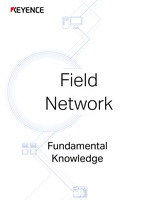MECHATROLINK-II
This section explains MECHATROLINK-II.
Overview
MECHATROLINK-II is an RS-485 based motion control network developed by YASKAWA Electric Corporation. Its specifications are managed by the Mechatrolink Members Association (MMA).
After the release of MECHATROLINK in 1995, MECHATROLINK-II was developed to have a higher transmission speed (4 Mbps to 10 Mbps) and a wider range of motion commands.
Wiring Method and Communication Protocol
Wiring method
Communication is based on general-purpose RS-485 and slaves are connected in series (daisy chain) using a bus. The maximum transmission distance is 50 m (164.0′) (100 m (328.1′) when a repeater is used) and terminating resistors are required at both ends of cables. The communication speed is 10 Mbps and the minimum link cycle is 0.25 ms. Up to 31 slaves can be connected.
Communication protocol
Communication is performed using the master/slave method. The master communicates with slaves by sending a command to and receiving a response from each slave in sequence. Received operation instructions are executed at synchronous timing in a transmission cycle.

Characteristics
This network supports cyclic communication in which the master communicates with all slaves in a fixed cycle.
Cyclic communication function
This function allows the master in a MECHATROLINK-II network to communicate with all slaves simultaneously in a fixed cycle. The communication cycle is shared by all slaves. Communication errors due to noise or similar causes are easy to prevent because the master retries within a transmission cycle when it detects a communication error. Two settings, 17 bytes and 32 bytes, are specified for the data length, but these settings cannot be used together during cyclic communication.
Related Networks
MECHATROLINK-III
This motion control network is wired using Ethernet.
- Company, product, and network names mentioned on this page are either trademarks or registered trademarks of their respective companies.
- Note that some information, such as applicable standards and specifications, may have changed since this page was published.
November 2015






